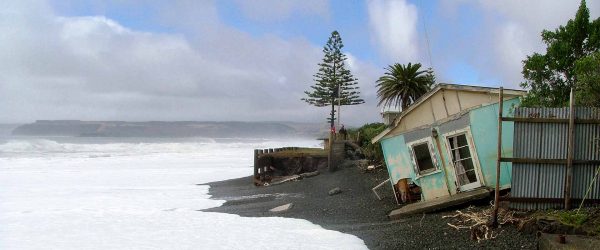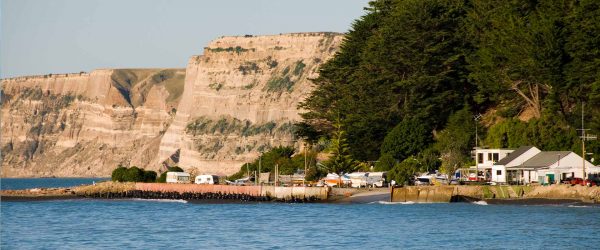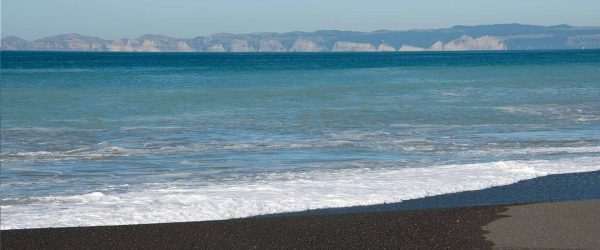Coastal Flooding
Ngā Waipuke Takutai
Vision
Coastal planning in Aotearoa New Zealand is supported by a deep understanding of current and future coastal flooding hazards and risks.
Project description
Accelerating sea-level rise and more frequent extreme weather events expose vulnerable communities in Aotearoa New Zealand to increasingly severe and frequent coastal flooding. The estuarine areas around which many of our cities and rural communities are developed are particularly vulnerable. Current models used to support planning for adaptation to coastal change do not consider the multiple hazards affecting these areas and the impact of changing nature of the land and seabed.
The models we are developing will incorporate human-caused and natural changes into the forecasts of the multiple hazards and risks affecting our most vulnerable coastlines. Our aim is for these models to be used in managing flooding risk and planning for coastal change adaptation.
To achieve this we are working with central and local government, hapū and iwi to:
- perform two case studies of shallow estuarine areas — Tauranga and the Firth of Thames — to model in detail the coastal changes, hazards and risks, and the factors causing them, both natural and those resulting from human activity
- use machine-learning technology to apply the computer modelling of the data from the case studies in developing projections of estuarine flooding for estuaries for which there is limited historical data.
Our goal is to improve our understanding of current and future coastal flooding hazard and risk, to give decision-makers greater certainty about coastal change when planning for coastal adaptation.
Wawata
Ka tautokohia te whakamahere mō te takutai moana i Aotearoa mā te tino mārama ki ngā mōrearea me ngā tūraru o te waipuketanga o te takutai moana o anamata.
Whakaahuatanga papatono
Nā te tere haere o te pikinga o te pae-moana me ngā huarere taikaha e auau haere ana i whakaraerae ai ngā hapori i Aotearoa ki ngā waipuke e taikaha haere ana, e auau haere ana. He whakaraerae rawa ngā wāhi wahapū e tū ai ā tātou taone me ngā hapori taiwhenua. Kāore i te whai whakaaro ngā tauira onāianei, e whakamahia ana hei tautoko i te whakamahere mō te urutaunga ki ngā hurihanga takutai moana, ki ngā mōrearea maha e pā ana ki ēnei wāhi me te pāpātanga o te hurihanga o te āhua o te whenua me te papa moana.
Ka whakauruuru ki ngā tauira e whakawhanakehia ana e mātou ngā hurihanga i puta i te tangata, i te taiao hoki ki ngā matapae mō ngā mōrearea me ngā tūraru maha e pāpā ana ki ā tātou takutai whakaraerae rawa. Ko tō mātou whāinga kia whakamahia ēnei tauira hei whakahaere i te tūraru waipuke me te whakamahere mō ngā urutaunga hurihanga takutai moana.
Hei whakatutuki i tēnei kei te mahi tahi mātou me te kāwanatanga ā-motu, ā-rohe hoki, ngā hapū me ngā iwi ki te:
- whakahaere i ngā rangahau take e rua mō ngā wāhi pāpaku o ngā wahapū – arā i Tauranga Moana me Tikapa Moana – hei āta whakatauira i ngā hurihanga takutai moana, ngā mōrearea me ngā tūraru, a, me ngā āhuatanga e puta ai aua mea, arā ko ngā āhuatanga taiao me ngā āhuatanga i puta i ngā mahi a te tangata
- Whakamahi i te hangarau ako ā-pūrere hei whakauru i te whakatauiratanga rorohiko o te raraunga nō ngā rangahau take ki te whakawhanake i ngā matapae mō te waipuketanga o ngā wahapū, ruarua nei te raraunga o mua.
Ko tō mātou whāinga ko te whakapai ake i tō mātou mōhio ki ngā mōrearea me ngā tūraru o ngā waipuke takutai onāianei, o anamata hoki, kia mārama pū hoki ngā kaiwhakatau ki ngā hurihanga takutai moana i a rātou e whakamahere ana mō ngā urutaunga takutai moana.
Resource Outputs from this project
The role of mangroves in coastal flood protection: The importance of channelization
Mangroves can be an effective coastal flood defence if the larger scale (forest-scale) distribution of vegetation also contributes to reducing the landward flow of water.
Spatial Transferability of Residential Building Damage Models between Coastal and Fluvial Flood Hazard Contexts
Using empirical data from coastal, riverine and riverine-levee breach flooding events to analyse residential building damage.
Spatial Transferability of Residential Building Damage Models between Coastal and Fluvial Flood Hazard Contexts
This study investigates residential building damage model transferability between coastal and fluvial flood hazard contexts.
A regional analysis of tide-surge interactions during extreme water levels in complex coastal systems of Aotearoa New Zealand
How does tide-surge interaction (TSI) affect coastal water levels around Aotearoa New Zealand and what are the implications for flooding hazard projections?
The role of coastal marae in natural hazard response and climate change adaptation
Many marae are looking to māturanga Māori developed through generations of observations to inform their adaptation to hazards exacerbated by climate change.
Future Changes in Built Environment Risk to Coastal Flooding, Permanent Inundation and Coastal Erosion Hazards
Stephens, S.A.; Paulik, R.; Reeve, G.; Wadhwa, S.; Popovich, B.; Shand, T.; Haughey, R. Future Changes in Built Environment Risk to Coastal Flooding, Permanent Inundation…
A waterline method to derive intertidal bathymetry from multispectral satellite images and its application to hydrodynamic modelling
Costa, W., Bryan, K., and Coco, G.: A waterline method to derive intertidal bathymetry from multispectral satellite images and its application to hydrodynamic modelling. Online…
The influence of tidal jet current – Ocean wave interaction on the embayed beach processes
Walker JH, Bryan KR, Trembanis AC. 2020. The influence of tidal jet current – ocean wave interaction on the embayed beach processes. Marine Geology. 426:106200.…
The response of sandy coastal systems to changes associated with sea level rise
Bryan K, Coco G. 2020. The response of sandy coastal systems to changes associated with sea level rise. In: Hendtlass C, Morgan S, Neale D,…
Assessing the use of satellite derived bathymetry in estuarine storm surge models – study case: Tauranga Harbour
Satellite-derived bathymetry techniques are accurate enough to use in hydrodynamic modelling, especially in remote areas, where the assessment of flooding risk is more difficult.
Assessing the use of satellite derived bathymetry to simulate storm surge in New Zealand estuaries
W. Costa, K. Bryan, G. Coco (2020) Assessing the use of satellite derived bathymetry to simulate storm surge in New Zealand estuaries. Coastal News 73,…



